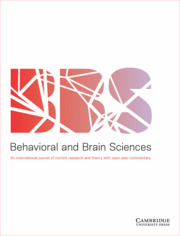Crossref Citations
This article has been cited by the following publications. This list is generated based on data provided by Crossref.
Young, Gerald
2011.
Development and Causality.
p.
207.
Siegel, Judith P.
2013.
An Expanded Approach to Batterer Intervention Programs Incorporating Neuroscience Research.
Trauma, Violence, & Abuse,
Vol. 14,
Issue. 4,
p.
295.
Siegel, Judith P.
2015.
Emotional Regulation in Adolescent Substance Use Disorders: Rethinking Risk.
Journal of Child & Adolescent Substance Abuse,
Vol. 24,
Issue. 2,
p.
67.
Tahir Jan, Muhammad
Abouzaid, Ahmed Mohamed Hamed Aly
Nadeem
and
Hossain, Tashpia
2020.
© 2020 Authors. This is an open access journal distributed under the Creative Commons BY 4.0 license (https://creativecommons.org/licenses/by/4.0/)DOI: 10.7172/2449-6634.jmcbem.2020.2.2Journal of Marketing and Consumer Behaviour in Emerging Markets 2(11)202016(16–32)Is Your Purchase Intention Influenced by Irrational Factors?An Investigation of Fashion Industry.
Journal of Marketing and Consumer Behaviour in Emerging Markets,
Vol. 2/2020,
Issue. 11,
p.
16.

